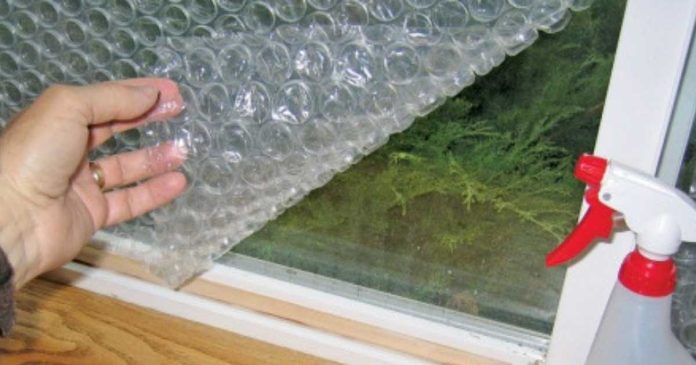Winter has arrived. If you live in a place where it’s warm year-round, this may not be a big concern, but if you’ve had a cold, snowy winter, you need to start preparing for winter. We also expect heating costs to go up and utility bills to increase even more. If you want to better insulate your home and save some money, you’ll want to check out this tip.

Windows are usually the biggest culprit of heat loss in your home. Cracks in and around windows not only suck out warm air, they also allow cold air to circulate through your home. To insulate and keep your windows warm, all you need are a few small things and a squirt bottle.
First, prepare some cling film by cutting it to the size of the window you want to insulate. Once you have the cling film, fill the squirt bottle with water and spray it onto the window glass. Then, simply press the cling film onto the glass. The water acts like an adhesive and that’s all you need to stick the pouch.

To hide the cling film (because it looks bad), you can simply drop the blinds. This will help insulate the windows and keep them warmer. When winter is over, simply peel off the cling wrap. This is an easy and inexpensive way to insulate your windows, keep your home warmer, and lower your heating bills. Watch the video below to see this hack in action.
How to insulate your home to keep it warm this winter
If you want to keep your energy bills low and reduce your carbon footprint, installing insulation is one of the best ways to keep the heat in your home and the cold out.
From simple methods to expert installations, here’s everything you need to know about insulating your home.
Start with the walls
About one-third of the heat in an uninsulated home is lost through the walls, so that’s a good place to start. Proper wall insulation can save energy and reduce your heating bills.
First, you need to figure out what type of walls you have. Most homes have either hollow walls or solid walls. Hollow walls usually have a uniform pattern where all the bricks are laid vertically.
If your home has solid walls, the bricks will have an alternating pattern, with some bricks laid horizontally across the wall so that you can see the smaller ends from the outside.
Walls with cavities can be insulated by a professional who injects insulation into the cavity. The specialist will drill a hole in the exterior wall, inject insulation through that hole, and then seal it with cement.
Solid walls can be insulated from both the inside and outside of the house.
Interior walls are insulated by installing rigid insulation panels on the walls or by building walls filled with insulation. Exterior walls are insulated by fixing a layer of insulation to the wall and then covering it with stucco work or cladding.










